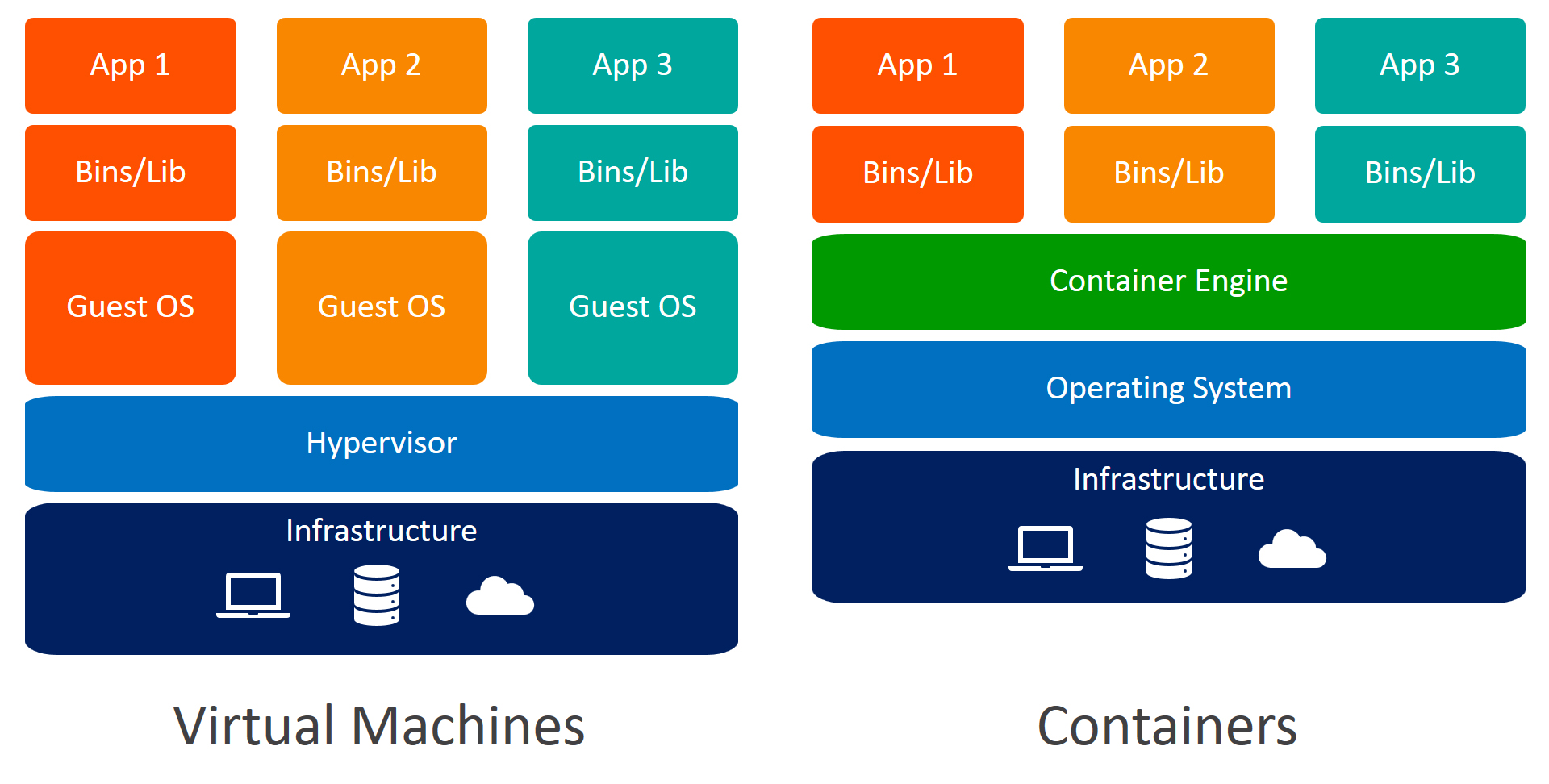Comparing containers to virtual machines
- Platform for building, distributing and running applications
- Lightweight container virtualization
- 10s of VMs => 100s, 1000s of containers per host
- Defined by Images (App and Environment), Registries (Docker Hub),
- Containers (Running isolated process in a box)
Containers and virtual machines have similar resource isolation and allocation benefits, but function differently because containers virtualize the operating system instead of hardware, containers are more portable and efficient. With virtualization technology, the package that can be passed around is a virtual machine and it includes an entire operating system and the application.
A physical server that is running three virtual machines would have a hypervisor and three separate operating systems that is running on top of it.
By contrast a server that is running three containerized applications as with Docker runs a single operating system, and each container shares the operating system kernel with the other containers. Shared parts of the operating system are read only, while each container has its own mount (for example, a way to access the container) for writing. That means the containers are much more lightweight and use far fewer resources than virtual machines.
Here are my other Blogs on Container Series –
-Ritesh
Disclaimer: “The postings on this site are my own and don’t necessarily represent IBM’s positions, strategies or opinions.”



very nice post thankyou for sharing. Sobha Royal Pavilion Sarjapur Road
LikeLike
Your blog is in a convincing manner, thanks for sharing such an information with lots of your effort and time datastage online training Indiadatastage online training Hyderabad
LikeLike
Thank you for sharing such an informative and splendid publish. Quickbooks Customer Service Number
LikeLike